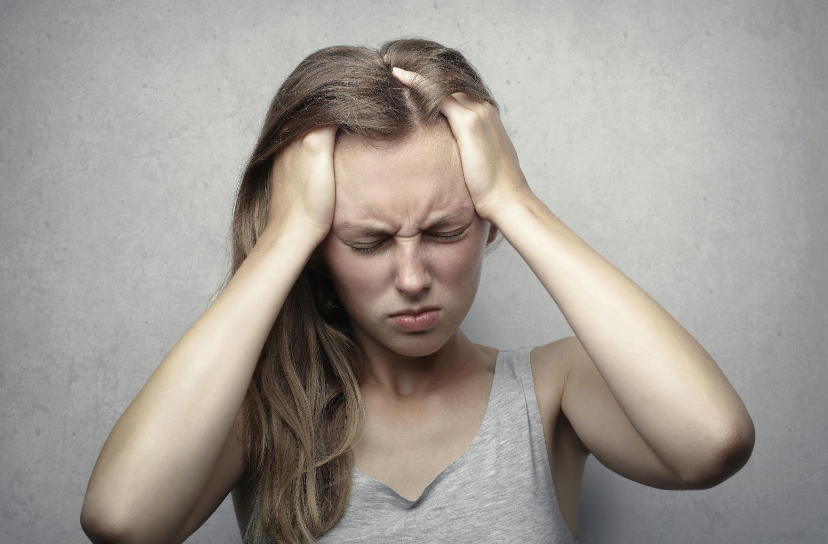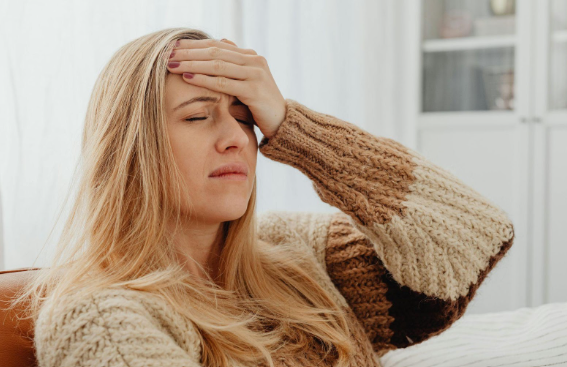May 1, 2025
Headaches vs. Migraines: Understanding the Difference and Finding Relief
Headaches vs. Migraines: Understanding the Difference and Finding Relief

Headaches are a common experience, affecting almost everyone at some point. But for some, headaches can be much more severe and debilitating, taking the form of migraines. While both headaches and migraines cause head pain, they differ significantly in their characteristics, causes, and treatment approaches.
Let’s unravel the differences between headaches and migraines, explore the potential of migraine cold caps for relief, and empower you to find solutions.
Types and Causes of Headaches
Headaches come in various forms, each with its own characteristics and causes:
Tension Headaches
This is the most common type and it is often described as a pressing or tightening sensation around the head. Stress, anxiety, muscle strain, or dehydration can trigger tension headaches.
Cluster Headaches
These are intense, one-sided headaches that occur in cycles and are accompanied by facial sweating, redness, and a runny nose. The exact cause remains unknown, but it's thought to involve changes in the hypothalamus, a part of the brain.
Sinus Headaches
These headaches often cause pain, pressure around the eyes and forehead, and facial tenderness. It usually results from inflammation or congestion in the sinuses.
Treatment for Headaches
Treatment typically involves over-the-counter pain relievers such as acetaminophen or ibuprofen. Additionally, lifestyle changes such as managing stress, staying hydrated, getting adequate sleep, and practicing good posture can help prevent headaches.
What Exactly Are Migraines?
Migraines are more than just intense headaches. They are a complex neurological condition characterized by a throbbing or pulsing sensation, often on one side of the head. Unlike headaches, migraines can be accompanied by:
- Nausea and vomiting
- Sensitivity to light and sound
- Visual disturbances (aura)
- Dizziness
- Fatigue
Various stimuli, such as stress, hormonal changes, certain foods and drinks, a lack of sleep, and strong smells, can trigger this condition. It can be episodic (occurring occasionally) or chronic (occurring for more than 15 days per month). They can significantly impact a person's daily life, affecting work, social activities, and overall well-being.
The Science Behind Migraine Pain
While the exact cause of migraines remains under investigation, researchers believe it's linked to abnormal activity in the brain. This can involve:
- Changes in Blood Flow: Blood vessel constriction and dilation are thought to play a role in the pain pathway.
- Neurotransmitter Imbalances: Serotonin, a brain chemical involved in mood regulation, may cause an initiation.
- Brain Wave Activity: Abnormal electrical activity in the brain can also contribute to the aura and other migraine symptoms.
Treatment for Migraines
Treatment typically involves a combination of medication, lifestyle modifications, and self-care techniques. Acute migraine medications such as triptans and NSAIDs can help alleviate pain during an attack, while preventive medications may be prescribed for individuals with frequent or severe migraines. Lifestyle changes such as identifying and avoiding triggers, maintaining a regular sleep schedule, staying hydrated, and practicing relaxation techniques can also help manage the condition.
Can Migraine Cold Caps Offer Relief?
Migraine cold caps, also known as cooling caps or head wraps, are wearable ice packs applied to the head during a migraine attack. The theory behind their use is that the cold temperature:
- Reduces Inflammation: Inflammation is thought to be a contributing factor in migraines. Cold therapy can help constrict blood vessels and reduce inflammation around the head.
- Numbs Pain Signals: The cold temperature can temporarily numb the nerves in the head, offering pain relief.
- Slows Down Nerve Signals: The coolness may slow the transmission of pain signals to the brain.
Weighing the Pros and Cons of Cold Caps
If you're considering trying migraine cold caps, here's a balanced view of their potential benefits and drawbacks:
Benefits
Cold caps provide a non-invasive and drug-free alternative for individuals looking to steer clear of medication side effects. They offer simplicity in their usage, being typically user-friendly and requiring minimal preparation. Moreover, they can help in reducing pain, especially during the initial phases of a migraine.
Drawbacks
Limited evidence supports the effectiveness of migraine cold caps, highlighting the necessity for further research to conclusively establish their efficacy across all migraines. It's important to recognize that cold caps are not a cure-all solution; they may not provide relief for everyone, and their effectiveness can vary from person to person. While they may offer short-term relief by temporarily numbing pain receptors, repeat applications might be necessary during a migraine attack.
Additionally, some individuals may find the cold sensation uncomfortable or even exacerbate their headaches. Therefore, you must weigh the potential benefits and drawbacks before considering cold caps as a migraine management strategy.
Complementary Therapies for Migraine Relief
Here are a few age-old therapies that can help ease this neurological condition:
- Acupuncture: This traditional Chinese medicine practice involves inserting thin needles into specific points on the body, potentially offering pain relief.
- Massage Therapy: Massage can help ease muscle tension, contributing to some headaches and migraines.
- Biofeedback: This technique trains individuals to control their physiological responses, potentially helping manage migraine pain.
Important Considerations
Here are a few key factors to consider when using migraine cold caps to maximize their effectiveness and ensure a safe and comfortable experience:
- Talk to Your Doctor: Before using any migraine treatment, including cold caps, consult your doctor to ensure it's safe and appropriate for you.
- Timing: For optimal results, apply the cold cap as soon as possible after the onset of migraine symptoms.
- Comfort and Usage: Choose a cold cap that fits comfortably and follow the manufacturer's instructions for proper use and duration.
- Be Patient and Persistent: Finding the right approach to managing migraines might involve trial and error. Stay patient and experiment with different methods to discover what works best for you.
Other Ways of Finding Relief
There are various strategies to explore alongside cold caps for migraine management. Here's a roadmap to consider:
Lifestyle Modifications
Identifying and addressing triggers, such as stress, lack of sleep, or certain foods, can significantly reduce migraine frequency and intensity.
Relaxation Techniques
Stress can be a major trigger for both headaches and migraines. Techniques like deep breathing, yoga, or meditation can help manage stress and potentially reduce the frequency and intensity of headaches.
Preventive Medications
If you experience frequent migraines, your doctor may recommend preventive medications to decrease attack severity and occurrence.
Acute Medications
Over-the-counter pain relievers or prescription migraine-specific medications can help manage pain during an attack.
The Future of Migraine Treatment
Research into migraines is constantly evolving. Here's a brief look at the exciting possibilities on the horizon:
- New Medications: Scientists are exploring medications that target specific migraine pathways, potentially leading to more effective and targeted treatments.
- Neuromodulation Techniques: Techniques like transcranial magnetic stimulation (TMS) and non-invasive vagal nerve stimulation are being investigated for their potential to prevent or reduce migraine frequency and severity.
Migraines are a complex condition, and the most effective approach will be unique to each individual. You should work with your healthcare provider to develop a personalized management plan that addresses your needs and preferences. By exploring various approaches and incorporating migraine cold caps as a potential tool, you can find ways to manage your migraines and reclaim control of your well-being.
Suffering from chronic headaches or debilitating migraines? Our
expert team at
Bayou Bend Health System can help you find relief. We offer personalized treatment plans and cutting-edge therapies to get you back to living your life to the fullest.
Contact us today and take control of your health!



